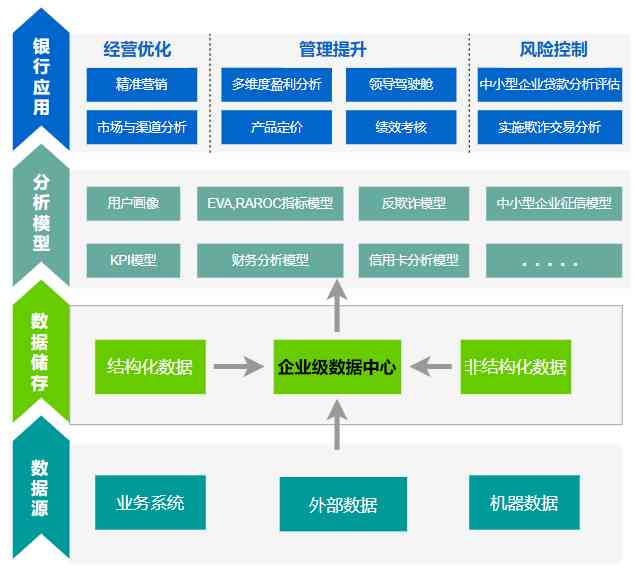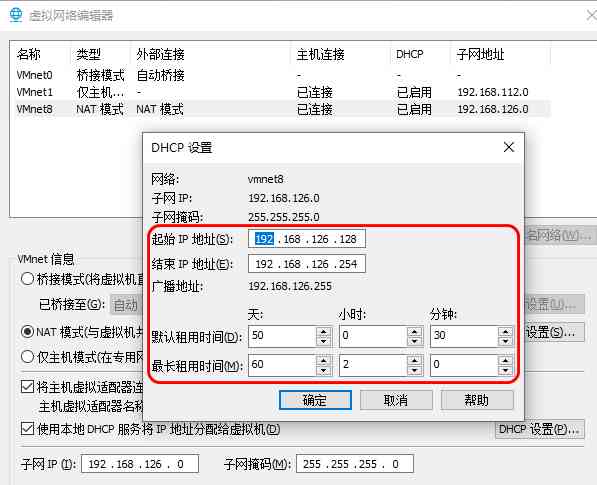面试官:手写一个 Promise,要求实现 resolve()/reject()/then()……
一 目录
不折腾的前端,和咸鱼有什么区别
| 目录 |
|---|
| 一 目录 |
| 二 迷思 |
| 三 简版手写 Promise |
| 四 手写 Promise |
| 五 Promise.all() |
| 六 Promise.race() |
| 七 Promise 异步调度器 |
| 八 参考文献 |
二 迷思
返回目录
JavaScript 里的异步方案的演进中:
callback -> promise -> generator -> async/await
在计算机行业,盛行着一种朴素还原论的迷思:即认为越接近底层,技术含量越高。
每个程序员都有读懂底层源代码的追求。
这在一定程度上是正确的。
不过,我们也应该看到,一旦底层和表层之间,形成了领域鸿沟。
精通底层,并不能代表在表层的水平。
比如游戏的开发者,不一定是游戏中的佼佼者。这在 FPS 射击游戏或者格斗游戏里尤为明显,这些游戏里的绝大部分顶尖玩家,完全不会写代码。
如果将精通 Promise 定义为,善于在各种异步场景中使用 Promise 解决问题。
那么,能手写 Promise 实现,对精通 Promise 帮助不大。
这段文本来源于 工业聚
三 简版手写 Promise
返回目录
const PENDING = 'pending';
const RESOLVED = 'resolved';
const REJECTED = 'rejected';
function myPromise(fn) {
const that = this;
that.status = PENDING;
that.value = null;
that.reason = null;
that.resolvedCallbacks = [];
that.rejectedCallbacks = [];
function resolve(value) {
if (that.status === PENDING) {
that.status = RESOLVED;
that.value = value;
that.resolvedCallbacks.map(cb => cb(value));
}
}
function reject(reason) {
if (that.status === PENDING) {
that.status = REJECTED;
that.reason = reason;
that.rejectedCallbacks.map(cb => cb(reason));
}
}
try {
fn(resolve, reject);
} catch(e) {
reject(e);
}
}
myPromise.prototype.then = function(onFullfilled, onRejected) {
const that = this;
if (that.status === PENDING) {
that.resolvedCallbacks.push(onFullfilled);
that.rejectedCallbacks.push(onRejected);
}
if (that.status === RESOLVED) {
onFullfilled(that.value);
}
if (that.status === RESOLVED) {
onFullfilled(that.reason);
}
return that;
}
const p = new myPromise((resolve, reject) => {
setTimeout(() => {
resolve(1000);
}, 1000);
});
p.then((res) => {
console.log('结果:', res); // 结果:1000
}).then(() => {
console.log('jsliang'); // jsliang
})这段代码在 jsliang 的个人理解上是这样解读的:
- 有
pending、resolved以及rejected这 3 个状态。详见代码前 3 行。 - 状态一旦由
pending向resolve或者rejected转变,那就不能再次变化。详见代码function resolve和function reject。 - 代码执行到
.then的时候,分为 2 种情况:其一是走了异步,状态成了PENDING,走第一个逻辑;其二是RESOLVED或者RESOLVED,走了第二个和第三个逻辑。 - 在走了第一个逻辑的情况中,因为我们是异步方案,所以会在
n秒之后走function resolve或者function reject,而在这两个方法体中,that.resolvedCallbacks.map(cb => cb(value))或者that.rejectedCallbacks.map(cb => cb(reason))会将我们存入的回调方法进行执行,从而实现Promise.then()的功能。
如果小伙伴还不清晰地可以敲多两遍代码,如果小伙伴对 jsliang 的理解不感兴趣的,可以看看参考文献的 Promise A+ 规范,更有利于小伙伴理解。
四 手写 Promise
返回目录
代码来源工业聚那篇文章:
一开始本来觉得这份代码非常健全,但是让 jsliang 默写真的太为难自己了,所以用了上一章的那份代码。
/**
* @name JsliangPromise
* @description 手写 Promise
*/
/* ——————————————————————————————————————————————— 设置共用函数 ——————————————————————————————————————————————— */
// 判断是否为函数
const isFunction = (obj) => {
return typeof obj === 'function';
};
// 判断是否为对象
const isObject = (obj) => {
return !!(obj && typeof obj === 'object');
};
// 判断是否为 thenable
const isThenable = (obj) => {
return (
isFunction(obj)
|| isObject(obj)
) && 'then' in obj;
};
// 判断是否为 Promise
const isPromise = (promise) => {
return promise instanceof JsliangPromise;
};
/* ——————————————————————————————————————————————— 设置 Promise 状态 ——————————————————————————————————————————————— */
/**
1. Promise 有 3 个状态:pending、fulfilled、rejected
* pending:Promise 可以切换到 fulfilled 或者 rejected 状态
* fulfilled:不能迁移到其他状态,必须有个不可变的 value
* rejected:不能迁移到其他状态,必须有个不可变的 reason
*/
const PENDING = 'pending';
const FULFILLED = 'fulfilled';
const REJECTED = 'rejected';
/* ——————————————————————————————————————————————— Promise 补充处理 ——————————————————————————————————————————————— */
// 3.6 handleCallback 函数,根据 state 状态,判断是走 fulfilled 路径还是 rejected 路径
const handleCallback = (callback, state, result) => {
// 3.6.1 解构
const { onFulfilled, onRejected, resolve, reject } = callback;
// 3.6.2 判断
try {
// 3.6.3 如果是成功的
if (state === FULFILLED) {
// 3.6.4 判断 onFulfilled 是否为函数
if (isFunction(onFulfilled)) {
// 3.6.5 如果是,将它的返回值作为下一个 Promise 的 result
resolve(onFulfilled(result));
} else {
// 3.6.6 如果不是,直接以当前 Promise 的 result 作为下一个 Promise 的 result
resolve(result);
}
} else if (state === REJECTED) {
if (isFunction(onRejected)) {
resolve(onRejected(result));
} else {
reject(result);
}
}
} catch (error) {
// 3.6.7 如果执行过程抛错,那这个错误,作为下一个 Promise 的 rejected reason 来用
reject(error);
}
};
// 2.3.4 清空之前的内容
const handleCallbacks = (callbacks, state, result) => {
while (callbacks.length) {
handleCallback(callbacks.shift(), state, result);
}
};
// 2.3 状态一旦不是 pending,就不允许再次转换
const transition = (promise, state, result) => {
// 2.3.1 如果是 pending,那么就就该成对应的 state 和 result
if (promise.state !== PENDING) {
return;
}
// 2.3.2 如果不是,那么就进行设置
promise.state = state;
promise.result = result;
// 2.3.3 当状态变更时,异步清空所有 callbacks
setTimeout(() => {
handleCallbacks(promise.callbacks, state, result);
}, 0);
}
// 2.6 一些特殊的 value 被 resolve 时,要做特殊处理。
// 这个特殊处理,规范也明确描述了
const resolvePromise = (promise, result, resolve, reject) => {
// 2.6.1 如果 result 是当前 Promise 本身,就抛出 TypeError 错误
if (result === promise) {
return reject(new TypeError('Can not fulfill promise with itself'));
}
// 2.6.2 如果 result 是另一个 Promise,那么沿用当前的 state 和 result 状态
if (isPromise(result)) {
return result.then(resolve, reject);
}
// 2.6.3 如果 result 是一个 thenable 对象。
// 先去 then 函数,再 call then 函数,重新进入 The Promise resolution procedure 过程
if (isThenable(result)) {
try {
if (isFunction(result.then)) {
return new JsliangPromise(then.bind(result)).then(resolve, reject);
}
} catch (error) {
return reject(error);
}
}
// 2.6.4 若都不是,直接 resolve result
resolve(result);
};
/* ——————————————————————————————————————————————— Promise 实现 ——————————————————————————————————————————————— */
// 2. 设置 Promise
const JsliangPromise = function(f) {
// 2.1 设置初始化状态
this.state = PENDING;
this.result = null;
// 3.1 .then() 可以被多次调用,所以需要设置数组进行记录
this.callbacks = [];
// 2.2 构造 onFulfilled 来切换到 fulfilled,构造 onRejected 来切换到 rejected 状态
const onFulfilled = value => transition(this, FULFILLED, value);
const onRejected = reason => transition(this, REJECTED, reason);
// 2.3 配合 ignore 来保证 resolve/reject 只有一次调用作用
let ignore = false;
// 2.4 设置 resolve 的处理方式
let resolve = (value) => {
if (ignore) {
return;
}
ignore = true;
// 2.5 对 resolve 进行 3 条规则判定
resolvePromise(this, value, onFulfilled, onRejected);
};
let reject = (reason) => {
if (ignore) {
return;
}
ignore = true;
onRejected(reason);
}
// 2.6 进行尝试
try {
// 2.6.1 将 resolve 和 reject 作为参数传入 f 函数,方便调用
f(resolve, reject);
} catch (error) {
// 2.6.2 如果 f 函数执行报错,那么错误就作为 reject 的 reason 来用
reject(error);
}
}
// 3. Promise.then 方法
JsliangPromise.prototype.then = function (onFulfilled, onRejected) {
// 3.2 .then() 方法返回 Promise,所以需要 return 一个出去
return new JsliangPromise((resolve, reject) => {
// 3.3 设置 callback
const callback = { onFulfilled, onRejected, resolve, reject };
// 3.4 如果 state 处于 pending 状态,就存储进 callbacks 列表里
if (this.state === PENDING) {
this.callbacks.push(callback);
} else {
// 3.5 如果不是,就扔个 handleCallback 去处理
// 至于为什么用 setTimeout?因为我们模拟不了微任务,那就用宏任务去解决吧
setTimeout(() => {
handleCallback(callback, this.state, this.result);
}, 0);
}
});
};
/* ——————————————————————————————————————————————— 测试 ——————————————————————————————————————————————— */
const promise = new JsliangPromise((resolve, reject) => {
setTimeout(() => {
console.log(1);
resolve(2);
}, 1000);
});
promise.then((res) => {
console.log('res 1:', res);
return 3;
}).then((res) => {
console.log('res 2:', res);
});五 Promise.all()
返回目录
下面我们练习一些题目。
给定内容:
const a = new Promise((resolve) => {
setTimeout(() => {
resolve(500);
}, 500);
});
const b = new Promise((resolve) => {
setTimeout(() => {
resolve(1000);
}, 1000);
});
Promise.myAll([a, b]).then((res) => {
console.log('结果:', res);
});要求输出 结果:[ 500, 1000 ]。
Promise.myAll = function(arr) {
// 1. 返回一个 Promise
return new Promise((resolve, reject) => {
// 2. 设置最终返回结果
const result = [];
// 3. 获取数组的长度以及当前进展索引 index
const length = arr.length;
let index = 0;
// 4. 遍历数组,将里面所有内容走一遍
for (let i = 0; i < arr.length; i++) {
// 5 在 .then 里面给 result 设置内容
// 如果 index 到了最尾,那么就 resolve(result)
// 否则 reject(err)
arr[i].then((res) => {
result[i] = res;
index++;
if (index === length) {
resolve(result);
}
}).catch((err) => {
throw new Error(err);
})
}
})
};六 Promise.race()
返回目录
给定内容:
const a = new Promise((resolve) => {
setTimeout(() => {
resolve(500);
}, 500);
});
const b = new Promise((resolve) => {
setTimeout(() => {
resolve(1000);
}, 1000);
});
Promise.myRace([a, b]).then((res) => {
console.log('结果:', res);
});要求输出 结果:500。
race 方法和前面的 all 方法类似,不同的是它在第一次执行 .then 的时候直接返回结果就可以了,而不需要每个结果都返回。
Promise.myRace = function(arr) {
return new Promise((resolve, reject) => {
for (let i = 0; i < arr.length; i++) {
arr[i].then((res) => {
return resolve(res);
}).catch((err) => {
throw new Error(err);
})
}
})
};
const a = new Promise((resolve) => {
setTimeout(() => {
resolve(500);
}, 500);
});
const b = new Promise((resolve) => {
setTimeout(() => {
resolve(1000);
}, 1000);
});
Promise.myRace([a, b]).then((res) => {
console.log('结果:', res);
})七 Promise 异步调度器
返回目录
审题并完成下面代码:
/**
* 题目:JS 实现异步调度器
* 要求:
* JS 实现一个带并发限制的异步调度器 Scheduler,保证同时运行的任务最多有 2 个
* 完善下面代码中的 Scheduler 类,使程序能正确输出
*/
class Scheduler {
add(promiseCreator) {
// ...
}
// ...
}
const timeout = (time) => {
return new Promise((resolve) => {
setTimeout(() => {
resolve();
}, time);
});
};
const scheduler = new Scheduler();
const addTack = (time, order) => {
return scheduler
.add(() => timeout(time))
.then(() => console.log(order));
};
addTack(1000, '1');
addTack(500, '2');
addTack(300, '3');
addTack(400, '4');
// 输出:2 3 1 4
// 一开始,1、2 两个任务进入队列
// 500ms 时,完成 2,输出 2,任务 3 进队
// 800ms 时,完成 3,输出 3,任务 4 进队
// 1000ms 时,完成 1,输出 1,没有下一个进队的
// 1200ms 时,完成 4,输出 4,没有下一个进队的
// 进队完成,输出 2 3 1 4实现方式(async/await):
/**
* 题目:JS 实现异步调度器
* 要求:
* JS 实现一个带并发限制的异步调度器 Scheduler,保证同时运行的任务最多有 2 个
* 完善下面代码中的 Scheduler 类,使程序能正确输出
*/
class Scheduler {
constructor(maxNum) {
this.taskList = [];
this.count = 0;
this.maxNum = maxNum; // 最大并发数
}
async add(promiseCreator) {
// 如果当前并发超过最大并发,那就进入任务队列等待
if (this.count >= this.maxNum) {
await new Promise((resolve) => {
this.taskList.push(resolve);
})
}
// 次数 + 1(如果前面的没执行完,那就一直添加)
this.count++;
// 等待里面内容执行完毕
const result = await promiseCreator();
// 次数 - 1
this.count--;
// 将队首出队
if (this.taskList.length) {
this.taskList.shift()();
}
// 链式调用,将结果值返回出去
return result;
}
}
const timeout = (time) => {
return new Promise((resolve) => {
setTimeout(() => {
resolve();
}, time);
});
};
const scheduler = new Scheduler(2);
const addTack = (time, order) => {
return scheduler
.add(() => timeout(time))
.then(() => console.log(order));
};
addTack(1000, '1');
addTack(500, '2');
addTack(300, '3');
addTack(400, '4');
// 输出:2 3 1 4
// 一开始,1、2 两个任务进入队列
// 500ms 时,完成 2,输出 2,任务 3 进队
// 800ms 时,完成 3,输出 3,任务 4 进队
// 1000ms 时,完成 1,输出 1,没有下一个进队的
// 1200ms 时,完成 4,输出 4,没有下一个进队的
// 进队完成,输出 2 3 1 4八 参考文献
返回目录
- [x] 100 行代码实现 Promises/A+ 规范【阅读建议:30min】
- [x] 最简实现 Promise,支持异步链式调用(20行)【建议阅读:20min】
- [x] BAT 前端经典面试问题:史上最最最详细的手写 Promise 教程【阅读建议:30min】
- [x] 一起学习造轮子(一):从零开始写一个符合Promises/A+规范的promise【阅读建议:大概看了遍,没前面剖析的清晰】
- [x] Promise实现原理(附源码)【阅读建议:大概看了遍,没前面剖析的清晰】
- [x] 剖析Promise内部结构,一步一步实现一个完整的、能通过所有Test case的Promise类【建议阅读:写得比较细,没前面剖析的清晰】
- [x] 小邵教你玩转promise源码【建议阅读:写得比较细,没前面剖析的清晰】
- [x] Promise不会??看这里!!!史上最通俗易懂的Promise!!!【建议阅读:写得比较细,没前面剖析的清晰】
jsliang 的文档库由 梁峻荣 采用 知识共享 署名-非商业性使用-相同方式共享 4.0 国际 许可协议 进行许可。<br/>基于 https://github.com/LiangJunrong/document-library 上的作品创作。<br/>本许可协议授权之外的使用权限可以从 https://creativecommons.org/licenses/by-nc-sa/2.5/cn/ 处获得。


![[QT] subclass qthread to realize multithreading](/img/95/085ef9ecf3478a8c6bad4f75716dd8.jpg)

